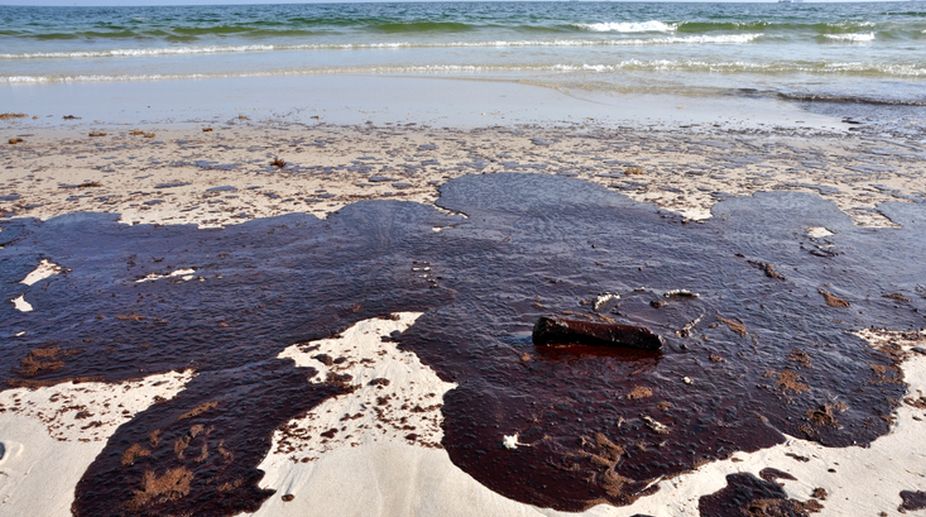India outperforms global average in UN sustainability goals: Hardeep Puri
Despite the vast financing gap in achieving sustainability goals, he said, adding that India has been proactive in mobilising resources and implementing impactful initiatives.

Representational image (Photo: Getty Images)
Days after LGP carrier BW Maple and oil tanker Dawn Kanchipuram loaded with petroleum products, including lubricants, collided off the Ennore Port last Saturday, a thick layer of more than 20 tonnes of black fuel oil has spread over the Chennai coast for a distance of 35 km, turning the beautiful beaches black. The National Oil Spill Disaster Contingency Plan remains on paper only with no sign of any immediate action. Thousands of coastal fishermen had to abandon their catch due to pollution. Their nets are soaked in oil rendering them unusable. The spill is bound to have an adverse impact on the marine ecosystem. The Coast Guard has been pressed into service to clean up the mess but progress has been slow. January-February is the spawning season for many species of fish and nesting season for turtles. Carcasses of turtles are seen floating in the waters. Fisher folk from Ennore in the north of Chennai to Neelankarai in the south of the city, whose daily catch accounts for about Rs.25 crore, have been rendered idle. Fish sales have plummeted for fear of pollution. Tar balls have started forming in the entire stretch of the coast. According to the Tamil Nadu Pollution Control Board, float boom could be used to remove lighter oil, but in the present case, the spill is too thick to yield any appreciable result. The Coast Guard has so far removed about 15 tonnes of oil. Its helicopters have been carrying out sorties throughout the day monitoring the drift pattern of the oil slick.
A team of scientists from the Integrated Coastal and Marine Area Management under the Ministry of Earth Sciences has collected water samples along the Chennai coast to study its impact on the marine ecosystem, while another team from the Hyderabad-based Indian National Centre for Ocean Information Services is running an oil spill trajectory prediction system to ascertain the movement of the oil on the sea in the coming days and predict the areas that are likely to be affected. It found the oil had drifted on the surface of the sea at the rate of 10 cm per second since it started leaking on Saturday morning. As the leak happened close to the coast, it has drifted more towards the shore as the currents run parallel to the shoreline. One could see a thin film of oil on the beach. An analysis of the water collected will give the scientists a clear picture of its quality and impact on marine organisms. According to port authorities, the spill was caused from the heavy fuel oil used to run the ship and not from the cargo of the ship. The cleanup of fuel grade oil is the most problematic among oils due to its high viscosity. It neither dissipates readily nor degrades naturally. Had the standard operating procedure been followed on the morning of the collision itself, the oil slick would not have spread to such a large area. The disaster management protocol was completely missing.
Advertisement
Advertisement